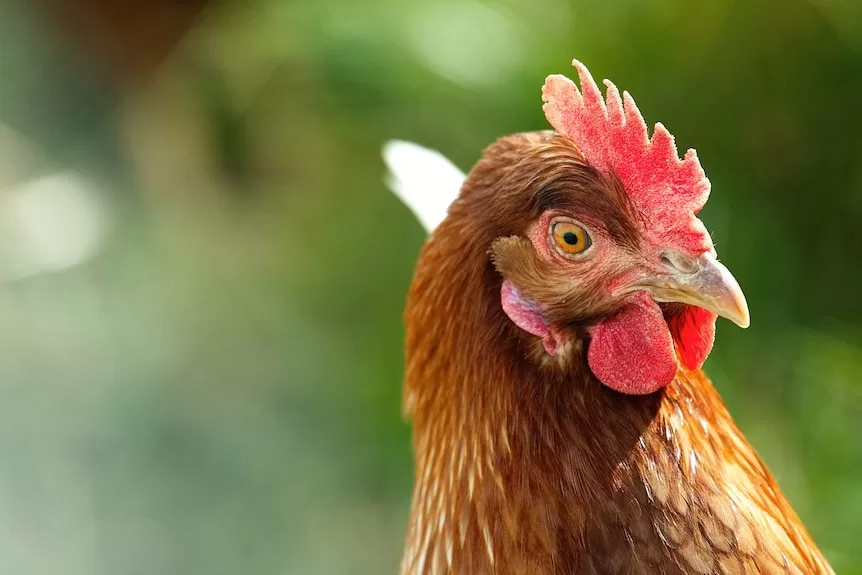United States health authorities say the risk to human health from a strain of avian influenza spreading through dairy cattle remains low, even after a third case of human infection was recorded in Michigan.
The two previous cases, involving dairy workers in Michigan and Texas, reported mild conjunctivitis symptoms that authorities believe were the result of direct contact with milk or other fluids of infected dairy cattle.
But the third case, another Michigan dairy worker, has developed respiratory symptoms, according to the Centres for Disease Control (CDC).
“As with the previous two cases, the person is a dairy farm worker with exposure to infected cows, making this another instance of probable cow-to-person spread,” the CDC said in a statement.
“This is the first human case of H5 in the United States to report more typical symptoms of acute respiratory illness associated with influenza virus infection, including A(H5N1) viruses.”
This is just the fourth case of human infection by this strain of the H5N1 virus — or HPAI (Highly Pathogenic Avian Influenza) — in US history.
Its low transmissibility combined with the mild symptoms it produces means the CDC still considers the overall risk to human health to be low.
“This case does not change CDC’s current A(H5N1) bird flu human health risk assessment for the US general public because all three sporadic cases had direct contact with infected cows,” the CDC said.
“Risk depends on exposure, and in this case, the relevant exposure is to infected animals,” it said.
“The risk to members of the general public who do not have exposure to infected animals remains low.”
So far, the avian influenza has been detected in 68 dairy herds in nine US states.
North Carolina State University department of poultry science professor Matt Koci told the ABC that it’s important for the virus’s spread to be contained before it has a chance to mutate, and potentially become more infectious.
“In cows, at least, this strain is not fatal — it seems like they’re all recovering after a period of days to maybe a couple of weeks,” Professor Koci said.
“We want to get this under control and mopped up as quickly as possible so we don’t give the virus more time to potentially mutate and change.
“So far, there have been no indications that the virus is mutating or is changing in any way that would make this a greater risk to humans.”
Professor Koci said while the poultry industry, which has been dealing with an avian influenza outbreak since 2022, hasdadapted to work under stricter biosecurity controls, the dairy industry was still catching up.
“This is something that dairy workers haven’t had to deal with before, like poultry workers have,” he said.
Infected milk
While raw milk samples taken from infected cattle have revealed high levels of the virus, recent testing by the Food and Drug Administration (FDA) found no live viruses in retail products.
Health authorities and experts say there’s no risk to human health from dairy foods that have been pasteurised.
“The pasteurisation process is at a temperature and at a time that far exceeds anything that the virus could survive,” Professor Koci said.
Genomic analysis of the virus in cattle indicates the highly infectious strain was circulating well before the first cases were detected in Texas on March 23.
Scientists at the United States Department of Agriculture and National Veterinary Services Laboratory have traced the spillover from birds to dairy cattle to early December 2023.
The analysis, published on biological sciences server bioRxiv, also indicated all of the cases in US dairy cattle stem from a single transmission event.
Symptoms in sick cattle include reduced milk production, loss of appetite, fever, lethargy and thickened colostrum-like milk.
Global spread
Avian influenza has been spreading across the globe for several years according to Massey University professor of infectious disease, epidemiology and pubic health, Nigel French.
“The H5N1 types have been spreading for some time, but this new variant, the 2.3.4.4b strain, which is the one that’s circulating around the world and causing such a huge problem in wild birds, appears to have originated in in Eurasia and spread to every other continent except Oceania,” he said.
The virus has also been been detected in sea lions in South America, walrus in the Arctic and mink in Europe.
The migratory waterfowl that have helped spread the virus across the globe do not transit through Australia, but the virus continues to spread to migratory birds that do pass through Australia.
This week, a different strain of avian influenza, called H7N3, was detected on two separate poultry farms in Victoria, with hundreds of thousands of birds culled to limit the spread of the virus.
In 2020, a similar strain led to an outbreak of avian influenza on free-range poultry farms in Lethbridge, Victoria, and the culling of over 400,000 birds.
Posted , updated
